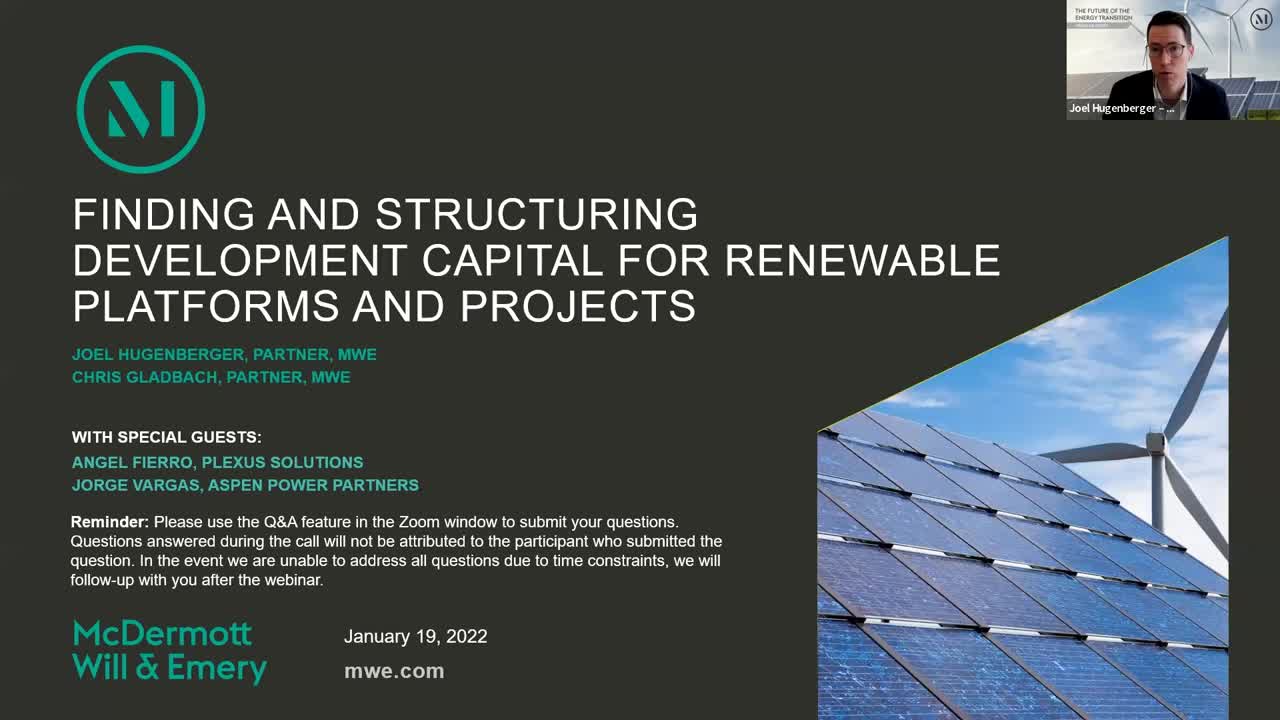Overview

During the latest webinar in our Energy Transition series, McDermott Partners Christopher Gladbach and Joel Hugenberger hosted Angel Fierro, managing partner of PLEXUS Solutions, and Jorge Vargas, managing partner & co-founder of Aspen Power Partners, to discuss what financing is available to fund the development of projects before they reach notice to proceed (NTP). They also covered what capital providers and developers consider when approaching development capital to fund pre-NTP expenses and general business expansion and the challenges and opportunities associated with these financing products.
Below are key takeaways from the webinar:
1. The market for pre-NTP financing is expanding and diversifying. Traditionally, pre-NTP costs were covered by a developer using the development fee they received from selling a completed project or by granting preferred equity. Today, large credit funds, Environmental, Social and Corporate Governance (ESG) funds, boutique finance groups, family offices, oil and gas companies and corporations are all providing pre-NTP financing, and development loans are becoming a more common way for developers to cover pre-NTP costs.
2. Sponsors should look for development lenders that understand the typical risks and delays associated with the project development process. Development lenders need to be flexible and ready to accommodate development delays and other unexpected issues that arise as a project is brought to market. (This includes flexibility related to amendments and consents.) Lenders should be prepared to quickly provide amendments and waivers to address changes in a project’s timeline as it progresses toward NTP.
3. Price should not be the only thing developers consider when deciding which source of development capital to use. Developers should ensure that they and the capital providers are aligned when it comes to deadlines for NTP to occur, capacity to accommodate delays in the development process and the share of income generated from the project.
4. Development capital is essentially a bet on a development team, and in evaluating a development team, development lenders assess what experience management has and their success working together to bring projects to market. Development lenders want to see that a development team has people who know how to mitigate risk across the various segments of the development process (e.g., origination, site control, permitting, power marketing, etc.).
5. Power purchase agreements (PPAs) are becoming scarcer and shorter (10-year terms are replacing 25-year terms), and lenders and investors are getting more comfortable with providing capital to merchant projects and other projects that have traditionally struggled to obtain financing.
To access past webinars in this series and to begin receiving Energy updates, including invitations to the webinar series, please click here.